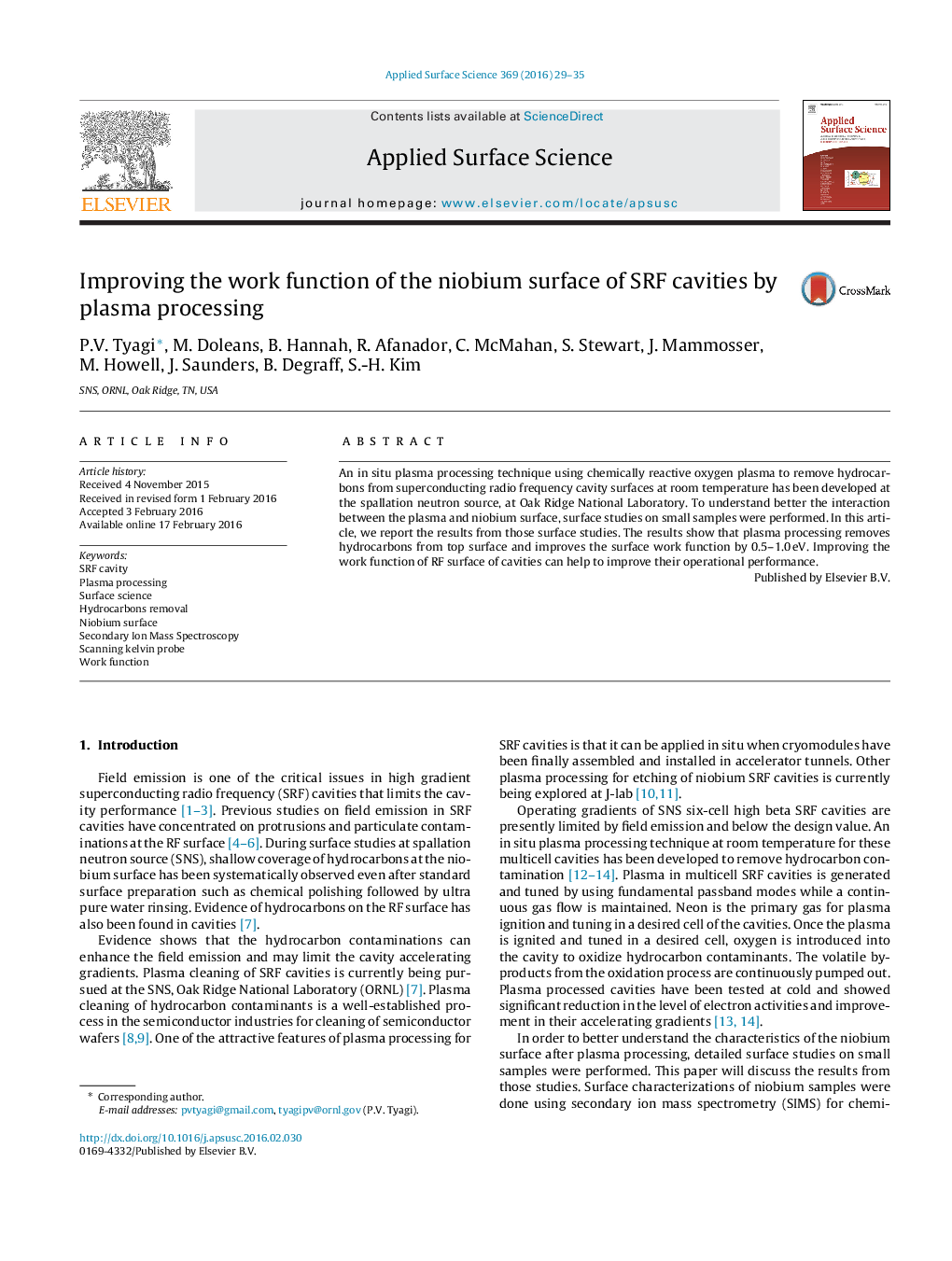| Article ID | Journal | Published Year | Pages | File Type |
|---|---|---|---|---|
| 5355190 | Applied Surface Science | 2016 | 7 Pages |
Abstract
An in situ plasma processing technique using chemically reactive oxygen plasma to remove hydrocarbons from superconducting radio frequency cavity surfaces at room temperature has been developed at the spallation neutron source, at Oak Ridge National Laboratory. To understand better the interaction between the plasma and niobium surface, surface studies on small samples were performed. In this article, we report the results from those surface studies. The results show that plasma processing removes hydrocarbons from top surface and improves the surface work function by 0.5-1.0Â eV. Improving the work function of RF surface of cavities can help to improve their operational performance.
Keywords
Related Topics
Physical Sciences and Engineering
Chemistry
Physical and Theoretical Chemistry
Authors
P.V. Tyagi, M. Doleans, B. Hannah, R. Afanador, C. McMahan, S. Stewart, J. Mammosser, M. Howell, J. Saunders, B. Degraff, S.-H. Kim,
